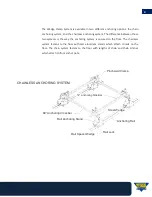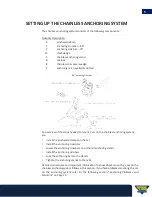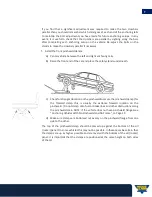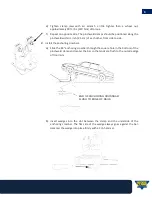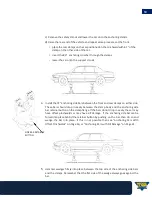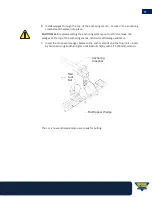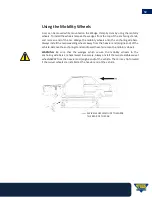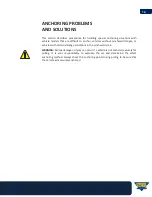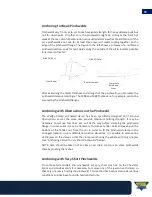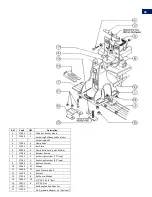
17
Anchoring to Offset Pinchwelds
If the pinchwelds do not run in straight line for their full length it is said that a vehicle has
offset pinchwelds. The left and right pinchwelds may angle in towards the center of the
car at one end or the other, or have a sudden step inward at one point along the sill
(rocker) panel. Examples of such pinchwelds are shown in the diagrams below. In
these cases, the anchoring side bars will not drop into place and slide easily between
the clamp body and the bar retainer button because the forward and rearward clamps
will not be in line with each other.
To install the anchoring side bars:
1.
Install the front pinchweld clamps as normal. If pinchweld clamps are at an odd
angle and there is no apparent sill damage, there is no need to be alarmed, this is
common with some vehicles.
2.
After all four pinchweld clamps have been installed and you are ready to place the
anchoring side bars into position, place the anchoring side bar in the front (or the odd
angled) pinchweld clamp first and insert the wedge to lock the bar into place against
this clamp. Then place your foot on the opposite end of the anchoring side bar and push
in until the anchoring side bar fits into the other pinchweld clamp behind the retainer
button. Now wedge the bar firmly into place the usual way.
NOTE: In some cases it may be necessary to remove the retainer button on the clamp
flange. If this is so, make sure that the anchoring side bar is up against and touching
the pinchweld clamp body. Then wedge the bar firmly into place.
NOTE: If the car has had sill damage refer to “Anchoring Cars with Sill Damage” on page
21.


